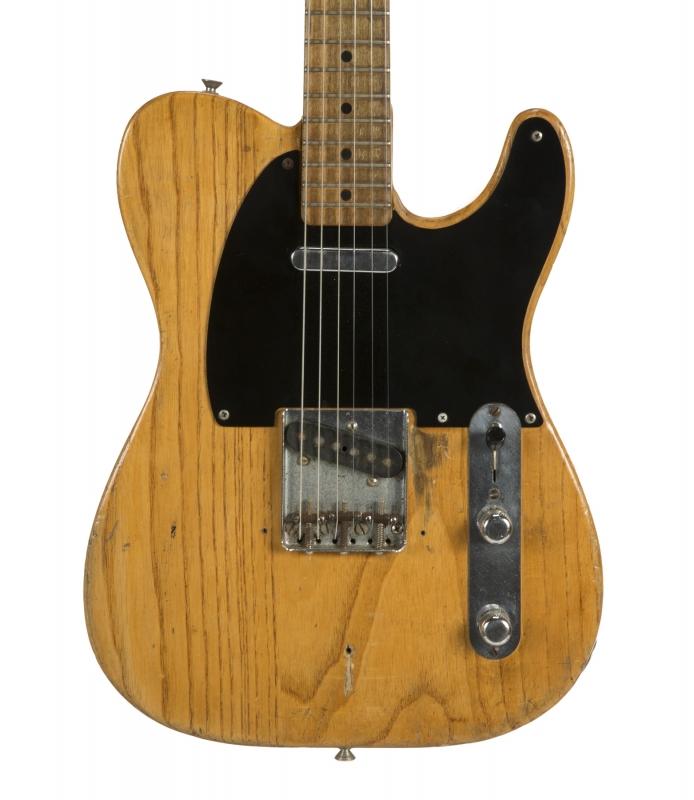Stevie Ray Vaughan's "Jimbo" 1951 Fender Broadcaster, a seminal instrument for the legendary guitarist, sold for $250,000 today through Dallas' Heritage Auctions.
The guitar itself has had quite an interesting history—presumed lost for decades and shrouded in mystery, with even the model of the guitar being debated over the years.
It was first owned by older brother Jimmie Vaughan, who carved "Jimbo" into its back and later gifted it to a 12-year-old Stevie, reportedly so that he would stop borrowing his other guitars. While still in high school, Stevie stripped the guitar's natural finish in shop class.

SRV's "Jimbo" 1951 Fender Broadcaster
In 1971, he traded it for a '63 Epiphone Riviera. But after his rise to fame, Stevie publicly begged for the guitar's return, pledging to break his pocketbook to buy it back, but no one came forward. It wasn't until the mid-2000s that the guitar was recognized for what it was.
According to this 2007 Premier Guitar article, Loni Specter, a songwriter, photographer, and head of the Los Angeles Amp Show, played a key role in re-discovering the instrument. He had seen a session guitarist playing a Tele-like guitar at a recording session with "Jimbo" carved on its back, but didn't recognize the guitar at the time. Soon after, he read about Stevie's "'52 Tele" in You Can't Stop a Comet, a book written by Stevie's close friend Cutter Brandenburg, and called that session guitarist to let him know what he owned.
The guitarist playing it that day had actually borrowed the instrument. But at Specter's suggestion, he bought Jimbo as soon as he could.

This story also illustrates some of the confusion about Jimbo's pedigree. The dominant theory holds that it is in fact a '51 Broadcaster—or rather a "Nocaster," as Broadcasters from that time are known. (Fender abruptly stopped using the moniker after Gretsch, creator of "Broadkaster" drum kits, made an infringement claim against them.)
But as discussed in Brandenburg's book, some people have thought that it was a '52 Telecaster (as Fender would call the model from that year forward) but that the name had been taken off the headstock. A third theory, supported by Reverb contributor Casey Hopkins in his "Short Guide to the Lesser-Known Guitars of Stevie Ray Vaughan," says that Jimbo was instead a '51 Esquire—originally having only the bridge pickup. When Stevie stripped its finish in shop class, he also routed the body to hold a neck pickup, according to this theory.
Stevie himself called it a "a '51 Tele, a cross between a Broadcaster and a Tele that I rebuilt." Regardless of its origination, its been a fabled part of SRV lore for years. After its rediscovery, it was exhibited at various guitar shows (including the LA Amp Show) and was displayed for five years at Los Angeles' Grammy Museum.
In 2016, Jimbo went up for sale through Julien's Auctions. Expected to reach upwards of half-a-million dollars, it instead didn't hit reserve, and remained unsold. Jimmie Vaughan has reportedly expressed interest in buying the instrument, but it is not known if he was today's buyer.
